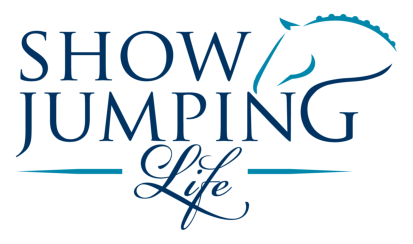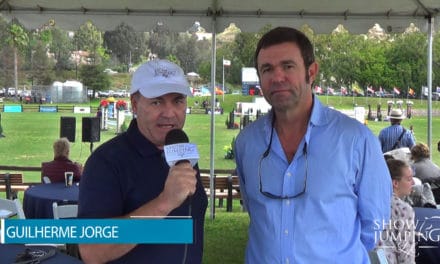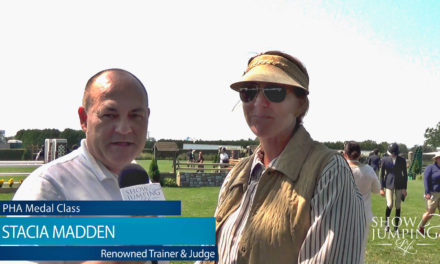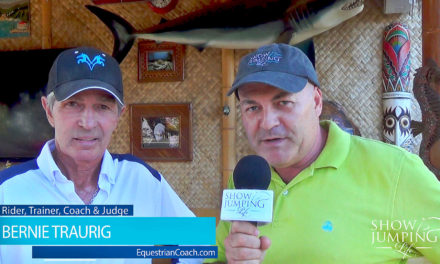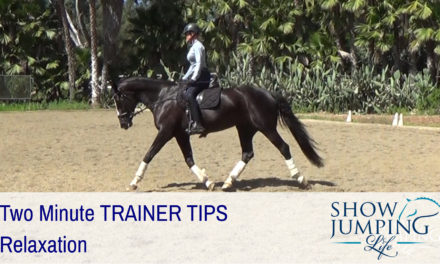What’s Your Show Jumping Training Philosophy?
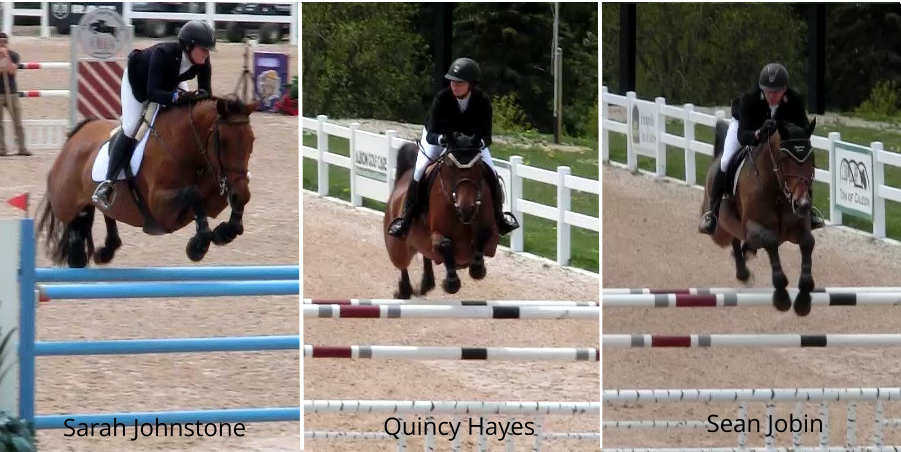
An Interview Series Examining The Rise Of Three Young Canadian Show Jumping Professionals
Part 2: What’s Your Training Philosophy?
Have you ever wondered what it’s like to be a young professional trying to make your way in this sport? Me too!
In this three-part series, I sit down with three successful young Canadian show jumping professionals to learn how they went from the pony ring to growing their current businesses and competing in FEI ranking classes. In these articles, the riders and I discuss:
- Their background and path to becoming a professional;
- Their thoughts on training and coaching, and
- Their personal riding careers and goals.
I interview Sarah Johnstone, Quincy Hayes and Sean Jobin, all of whom have had their share of success in the jumper and hunter rings as both juniors and now professional riders. Despite the different routes they have taken, they currently are all successful and respected trainers, riders, and horse people.
The second article of the series (presented below) covers their training and coaching philosophy.
Rosalie: Each of you competes in Canada over the summer and in Florida over the winter. What are some advantages of travelling south to compete in the winter?
Sarah: Competing at the WEF circuit (Wellington, FL) over the winter is very advantageous for riders because it gives them much needed ring time. For developing riders, there is a strong correlation between the amount of competing they do and the rate at which they develop, so riders that are able to compete throughout the winter tend to improve at a faster rate. For a professional, it is also extremely valuable because it allows you to do business on a bigger scale (throughout the United States) and to build your network with respected trainers and riders. Additionally, Wellington is a great place for professionals to increase their knowledge. I like to watch a few top riders throughout the circuit, taking note of the classes they enter, their performance and even their warm-up in the schooling area. It gives me an idea of their training system and it inspires me with my own training.
Quincy: Florida is very important for a young professional because it gives you the opportunity to get the exposure needed to build your reputation. It also allows me to stay connected with the sport at the top level. I make it a priority to walk every important class, even if I am not entered. Like Sarah, I am very interested in watching the top riders around me and soaking up as much knowledge from them as I can.
Sean: In my case, I am on the road most of the time, competing in the USA a bit in the summer in addition to Florida over the winter. I find competing in Florida is great because it is an opportunity to test your skills against riders and horses you would not normally compete against. It also tests the quality of your training program; you have to be very organized and have a good team around you to travel long distances with your horses to compete. Although it is not always easy to coordinate the logistics of travelling, it is important for me to stay in the loop by travelling to different high-level shows all over America. That being said, the quality and quantity of FEI shows in Canada is improving every year. We have a very good FEI circuit now and it is a unique opportunity to accumulate points while staying close to home.
Rosalie: What is an element in your training program that you think differentiates you from other trainers?
Sarah: I think consistency is huge with training; if you are constantly moving from trainer to trainer it is difficult to build a strong trainer-rider relationship that allows you to fully realize your potential. I was lucky to have a few trainers growing up who I stayed with for an extended time. Furthermore, these trainers supported me and provided me with opportunities not many riders have access to (such as competing at Spruce Meadows or in Florida). I have realized that all of these experiences are what allowed me to develop into a consistent and confident rider. So when I consider a student and their goals, I am always looking for ways to give them new experiences that will complement their goals.
Quincy: Because I rode with many experienced trainers, I was exposed to a wide range of viewpoints and theories on training horses and riders. For example, having been around a number of stables that were predominantly geared towards sales, I observed a lot of different types of horses and the specific exercises that brought out the best performance in each horse. In addition, I learned early in my career the importance of asking questions to learn as much as I can about the sport. I am still very close to trainers who mentored me in the past and I know they are always available to talk with if I come up against a difficult situation.
I try not to jump my horses much at home… I tend to do a lot of work with gymnastics because I believe this really helps to develop the horse’s power
Sean: I try not to jump my horses much at home, instead saving the jumping for the competition ring. If I do jump at home, I tend to do a lot of work with gymnastics because I believe this really helps to develop the horse’s power. Every week, I visit a gymnastics class houston and this has helped massively. It has made me stronger and more disciplined – plus I love attending! Gymnastics is such a fun sport and I really enjoy it. Also, I try to stay current on recent advancements in training ideas and am always looking for ways to incorporate new scientific findings into how I train my horses. It is an exciting time for our sport as data and statistical evidence are beginning to shed light on optimal ways to prepare horses for competition and reduce the risk of injury.
Rosalie: What are some priorities in your training program? What do you look to instill in your student?
Sarah: When it comes to my students, I try to teach them the importance of hard work and horsemanship. I also try to instill in them a good attitude when it comes to horse showing. The training must be done at home and ribbons don’t always reflect all of the work a student has put in or how much they have improved. I try to remind them that you are only as good as your next class and that there will always be a chance to remedy mistakes that may have been made today.
Put the horse and rider in the best position to succeed and to build their skills safely
Quincy: One of my top priorities is to teach my students to be patient and to enter classes that are correct for them at the present time. Occasionally, the student and horse may need to move down a division to fix some issues and for me that is perfectly acceptable. On the other hand, my students know that when I say they are ready to move up a division, they can have confidence and know it is the right decision. The whole purpose is to put the horse and rider in the best position to succeed and to build their skills safely. If I can get a student to understand this, then they have taken the first step in understanding true horsemanship.
Sean: I don’t do much coaching currently but the key element of my training program is to keep my horses sound, healthy and happy. To make sure this is the case, I keep track of their fitness, their nutrition and their mind set. It is important for me to take horses out on hacks and change up their routine by taking them to different settings. I believe that variety helps keep a horse sane and sound. With any students I am working with, I like to have an open conversation about these principles and to get them thinking about how their riding program is influencing the horse’s mind and body.
Rosalie: Briefly describe your teaching style.
I teach them to fight for what they want and to know that by working hard, they can achieve their goals
Sarah: My students always know that I will be 100% honest with them. I like to have open discussions regarding what level they are currently riding at and what their next step should be. I make a point of setting attainable objectives, which I find allows them to keep progressing and working hard. Mostly, I teach them to fight for what they want and to know that by working hard, they can achieve their goals.
Quincy: For me transparency is first and foremost. It is crucial for me to have a good relationship with each of my students. I always stay positive and set goals that are realistic and good for the rider and horse. Furthermore, I definitely find there are times when you need to push students to get the most out of them. It is amazing what some junior and amateur riders can accomplish with some encouragement.
Sean: I am a rider first and foremost. When I do teach students, I like to keep a relaxed atmosphere to allow my students to feel comfortable. I also like to ride a student’s horse in order to understand how the horse feels under saddle; which I feel allows me to be able to relate to my student and what they are feeling when they are riding. In order to be an effective coach, I believe you need to know your student’s horse so that you are on the same page when discussing how to improve performance.
Rosalie: A lot of people talk about how self-confidence makes a big difference in riding. Do you agree? What other qualities do you think are important when it comes to the development of a rider?
Sarah: Having confidence is definitely an important requirement for successful riding. As a trainer, I know that I have the opportunity to build their confidence and I take this part of my job very seriously. I build confidence in students by making sure that they are matched with the right horse so they can develop a strong and trusting partnership. In general, results come along when a student is partnered with the right horse in the right situation. Improved confidence will always follow these results.
Quincy: Yes, it is critical to have confidence in both your riding and in the horse underneath you. In my opinion, confidence comes from the work at home, such as flat-work, and from having a deep knowledge of your horse’s needs. When the time comes to compete, knowing your horse from top to bottom allows you to be confident in your abilities and it helps a student to stay in control in pressure situations.
Sean: I don’t think there is anything more important than confidence. Horses are very sensitive and I believe that if you are not confident in your ability as a rider, you are more likely to receive a negative response from them. Winning is rare, so don’t get discouraged if competition results aren’t going your way. For me, I find my confidence comes from adequate preparation at home; knowing that my horses and I are prepared to face any challenges that may come our way.
Up Next: Part 3 – The Keys To Success
About the riders:
Quincy Hayes with her mom, Darcy
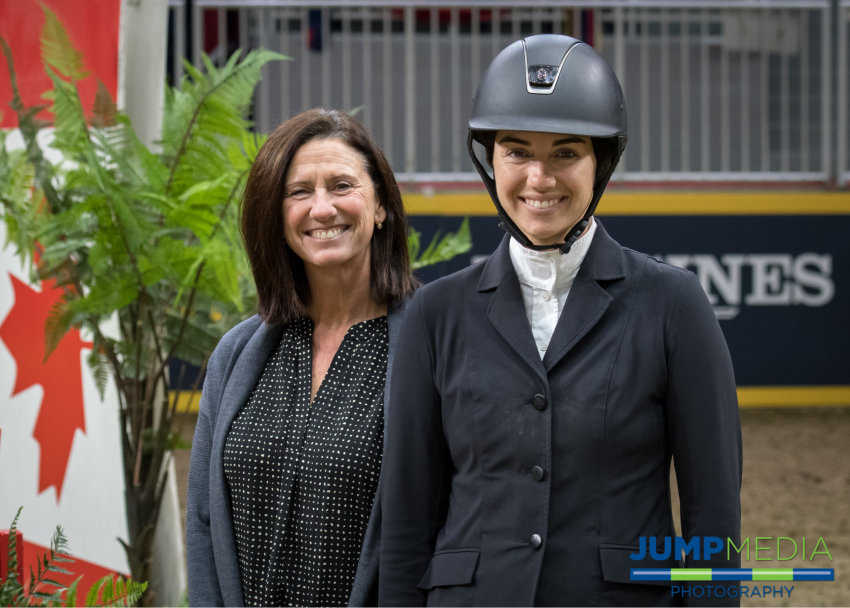
Photo courtesy Jump Media
She is now Co-Trainer at Hayes LTD, alongside her mother Darcy, in Aurora, Ontario. At Hayes LTD she teaches students from the pony ring up to the high Jr/Am jumper classes.
Sean Jobin
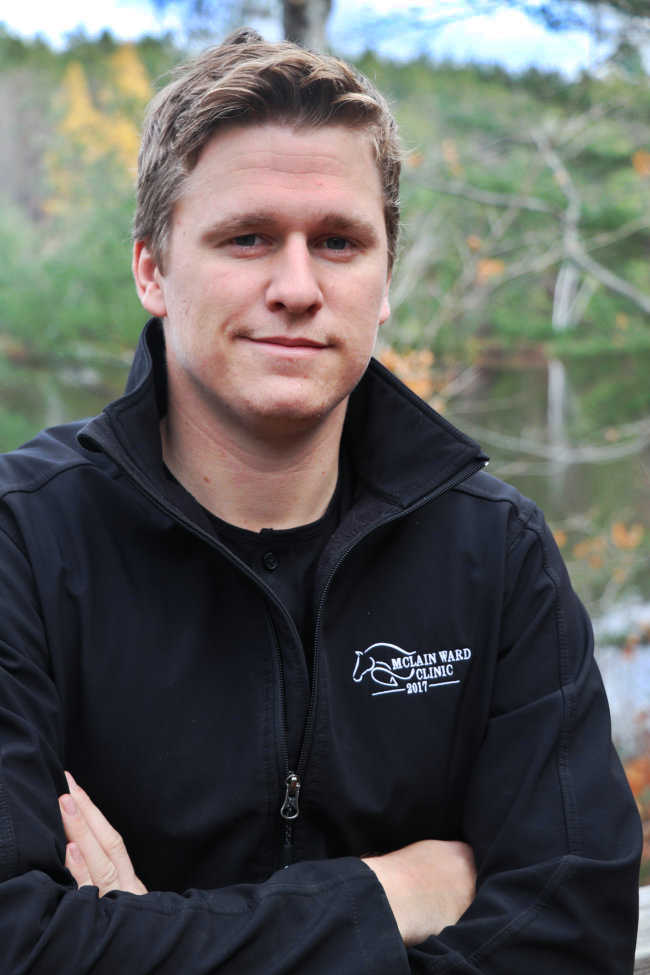
Sean Jobin had great visibility as a junior rider, showing many different horses in the hunter and jumper rings. Following a productive junior career, Sean turned professional at 18, immediately getting hired as a rider by trainers in Canada to showcase their sales and young horses. During this time, he picked up a number of Modified Grand Prix and Talent Squad wins. These results were even more impressive given that they came on sale horses that Sean had the ride on for only a short period of time.
Sean continues to focus on developing horses for the jumper and hunter rings through his business in Canada, while also competing at the Grand Prix level for Foxridge Farms..
Sarah Johnstone (left) with Olympic Show Jumper, Beth Underhill
She is currently head trainer at Wingberry Farm in Nobleton, Ontario.
